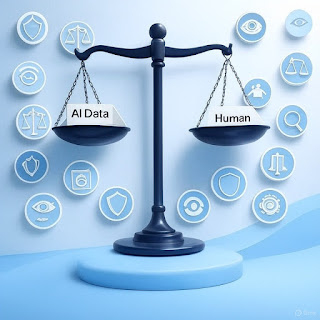Published Date: June 27, 2025
The COVID-19 pandemic, caused by the novel coronavirus SARS‑CoV‑2, emerged in late 2019 and rapidly evolved into an unprecedented global health emergency. Spanning nearly every nation, it disrupted lives, economies, and systems on a scale not witnessed in modern times. Beyond the staggering human toll, the pandemic revealed deep vulnerabilities in global healthcare, governance, and socio-economic structures—forcing the world to adapt, innovate, and reflect.
Origin and Global Spread 🌍
Image:
The virus was first identified in Wuhan, China, in December 2019. Within weeks, it had crossed international borders, fueled by global travel and dense urban populations. In March 2020, the World Health Organization (WHO) declared COVID‑19 a global pandemic. The virus, primarily transmitted via respiratory droplets and aerosols, led to waves of infections that overwhelmed health systems worldwide.
Governments responded with containment measures: lockdowns, travel restrictions, mask mandates, and social distancing. While effective in reducing transmission, these measures carried significant economic and social consequences.
Public Health Impact
Image:
COVID‑19 exposed the fragility of healthcare systems even in developed nations. Hospitals reached capacity, medical supply chains were strained, and frontline healthcare workers faced immense pressure. As of mid‑2023, the virus had infected hundreds of millions and resulted in over 6 million confirmed deaths globally.
The rapid development and deployment of vaccines, notably mRNA-based formulations, marked a turning point. Mass vaccination campaigns reduced infection severity and fatalities, though vaccine equity and hesitancy remained challenges.
Economic Fallout
Image:
The pandemic triggered one of the deepest global recessions since World War II. Industries such as tourism, hospitality, retail, and aviation were brought to a standstill. Small and medium-sized enterprises suffered significant losses, while unemployment surged worldwide.
Governments implemented emergency fiscal measures, including stimulus packages, unemployment benefits, and business relief programs. Central banks adopted accommodative monetary policies to stabilize financial markets. However, recovery remained uneven—and developing nations faced prolonged economic setbacks.
Societal and Psychological Consequences
Social structures were deeply affected. School closures and the shift to remote learning disrupted education for millions. Family separation, isolation, and fear triggered a surge in mental health issues, including anxiety, depression, and grief.
The pandemic also exacerbated existing inequalities: marginalized communities, essential workers, and those with limited healthcare access faced disproportionately higher risks. A clearer awareness of health disparities emerged.
Technological Advancement and Innovation
Despite the crisis, digital transformation accelerated across sectors. Remote work, telemedicine, and online collaboration tools became integral to daily life. Global scientific collaboration led to the fastest vaccine development timeline in history.
The pandemic underscored the critical importance of investing in health research, data infrastructure, and technology-driven resilience.
Environmental Insights
Image:
Lockdowns led to unexpected environmental changes:
-
Significant drops in air pollution (NO₂ and PM2.5), enhancing air quality.
-
Temporary reductions in CO₂ emissions and clearer skies.
-
Wildlife returning to formerly crowded urban spaces.
These changes illustrated the deep connection between human activity and the Earth system, highlighting opportunities for sustainable recovery strategies.
International Cooperation and Divisions
Global cooperation in science flourished, yet vaccine nationalism and misinformation sowed division. High-income countries secured early vaccine access, while COVAX and other initiatives sought equity in lower-income regions.
The pandemic reinforced the need for global solidarity but revealed persistent geopolitical and logistical challenges.
Current Situation (2025): Progress with Caution
As of 2025, the world has largely returned to normal. Vaccination campaigns—including updated boosters for emerging variants—remain active. Many countries have integrated COVID‑19 measures into routine public health systems.
However, the virus persists: periodic outbreaks still occur, particularly in regions with low vaccine coverage or weakened healthcare infrastructure. Public fatigue with health measures and misinformation remain pressing concerns.
Global surveillance systems are better—but experts warn complacency could lead to new surges, especially with novel variants.
A Warning for the Future
COVID‑19 must be seen not as a one-time crisis but a wake-up call. Future pandemics are highly probable. Urbanization, climate change, and global travel create ideal conditions for zoonotic diseases.
Continued vigilance, enhanced global cooperation, and sustained investment in preparedness infrastructures are essential. Without these, the world remains vulnerable to another catastrophic outbreak.
Key Lessons and the Path Forward
-
Preparedness Matters: Robust surveillance, early warning systems, and resource stockpiles are critical.
-
Healthcare Investment Is Essential: Equitable and strong healthcare systems underpin resilience.
-
Global Solidarity Is Non-Negotiable: Pathogens don’t respect borders—solutions shouldn’t either.
-
Innovation Saves Lives: Science and clear communication are vital for effective responses.
-
Complacency Is Dangerous: Ongoing commitment to global health security is essential.
Conclusion
The COVID‑19 pandemic was a defining moment in modern history. It tested global systems, transformed norms, and reshaped how we live and work. While much has been learned, the threat remains. The sacrifices made must inspire action—not forgetfulness.
The world now stands at a critical crossroads: we can either build a wiser, more prepared global community or risk repeating history. Let the lessons of COVID‑19 guide us toward a future anchored in empathy, equity, and resilience.



















